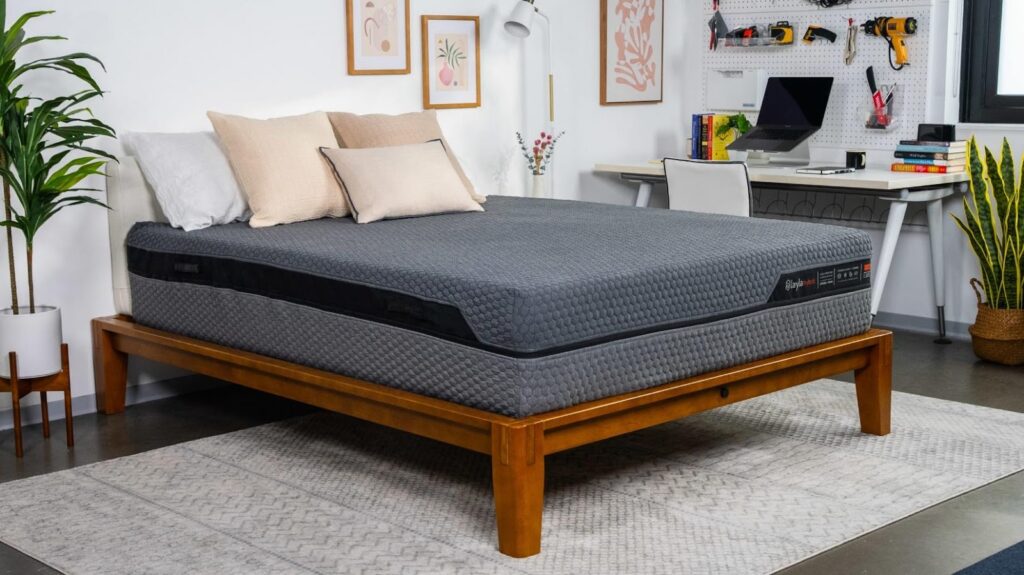When it comes to achieving a restful night’s sleep, the type of mattress you choose plays a pivotal role. With so many options available on the market, it can be overwhelming to navigate through the various types. Each mattress type offers unique benefits, so understanding your options is key to finding the perfect fit for your sleeping style and comfort preferences. In this article, we’ll explore the different types of mattresses, their characteristics, and what to consider when making your choice.
1. Innerspring Mattresses
Innerspring mattresses have been a popular choice for decades. They are constructed with a core of steel coils that provide support and bounce. Here are some key features:
a. Support and Responsiveness
Innerspring mattresses are known for their responsiveness. The coil system allows for air circulation, which can help keep the mattress cool. The varying coil designs—such as Bonnell coils, pocketed coils, and continuous coils—affect how the mattress feels and its level of support.
b. Durability
With proper care, innerspring mattresses can last a long time. They are generally sturdy and resilient, making them a good investment if you prefer a traditional feel.
c. Variety of Firmness Levels
Innerspring mattresses come in a range of firmness levels, catering to different sleeping preferences. Whether you prefer a plush feel or something firmer, you can find an innerspring option that suits your needs.
2. Memory Foam Mattresses
Memory foam mattresses have gained immense popularity in recent years, thanks to their unique ability to contour to the body.
a. Pressure Relief
Memory foam is known for its pressure-relieving properties. It conforms to the shape of your body, distributing weight evenly and reducing pressure points. This feature makes it an excellent choice for those who suffer from joint pain or discomfort.
b. Motion Isolation
One of the standout benefits of memory foam is its ability to absorb motion. If you sleep with a partner, you’re less likely to be disturbed by their movements, making for a more restful night.
c. Temperature Sensitivity
Traditional memory foam can retain heat, which may be a concern for some sleepers. However, many newer models incorporate cooling technologies, such as gel-infusions or open-cell structures, to enhance airflow and regulate temperature.
3. Latex Mattresses
Latex mattresses are made from natural or synthetic latex and offer a unique blend of support and comfort.
a. Durability
Latex is known for its longevity. High-quality latex mattresses can last for many years without losing their shape or support. This durability makes them a worthwhile investment.
b. Responsiveness and Bounce
Unlike memory foam, latex mattresses provide a more buoyant feel. They respond quickly to movement, which can be beneficial for those who change positions frequently during the night.
c. Hypoallergenic Properties
Natural latex is resistant to dust mites, mold, and mildew, making it a good option for allergy sufferers. If you’re sensitive to allergens, a latex mattress may be an ideal choice.
4. Hybrid Mattresses
Hybrid mattresses combine elements of innerspring and foam mattresses, offering the best of both worlds.
a. Balanced Support and Comfort
Typically featuring a support core of coils topped with layers of foam, hybrid mattresses provide both the bounce of an innerspring and the contouring comfort of memory foam. This combination caters to a wide range of sleepers.
b. Temperature Regulation
The coil system in hybrid mattresses promotes airflow, helping to keep you cool throughout the night. Additionally, foam layers can be designed with cooling technologies to further enhance temperature regulation.
c. Versatility
Hybrids are available in various firmness levels, making it easy to find one that meets your specific needs. Whether you prefer a softer feel or a firmer support, there’s likely a hybrid mattress that suits you.
5. Airbed Mattresses
Airbeds use air chambers as the primary support system and can be adjusted for firmness.
a. Customizable Comfort
One of the main advantages of airbeds is their adjustability. You can inflate or deflate the chambers to achieve your desired firmness level, making them ideal for couples with differing comfort preferences.
b. Easy to Transport
Airbeds are often lighter and more portable than traditional mattresses, making them a popular choice for camping or temporary sleeping arrangements.
c. Maintenance
While airbeds can be convenient, they may require occasional maintenance to ensure there are no leaks. Additionally, the feel may not be as consistent as other mattress types.
6. Pillow-Top Mattresses
Pillow-top mattresses are innerspring or hybrid mattresses that feature an additional layer of padding sewn into the top.
a. Extra Comfort
The pillow-top layer adds an extra layer of cushioning, making these mattresses particularly plush and comfortable. This feature is ideal for those who prefer a soft sleeping surface.
b. Variety of Materials
Pillow-top mattresses can be made from various materials, including memory foam, latex, or fiberfill. This variety allows you to choose the type of padding that best meets your comfort needs.
c. Support with Softness
While pillow-tops offer added softness, they still provide the support of the underlying innerspring or hybrid system, making them a good option for sleepers who want a balance of comfort and support.
7. Conclusion
Choosing the right mattress is essential for a good night’s sleep. With options ranging from innerspring and memory foam to latex and hybrids, there’s a mattress to suit every individual’s preferences and needs. Consider factors like support, comfort, durability, and maintenance when making your decision.
If you’re curious about exploring the different options available, including details about dimensions and configurations, you might find it useful to learn about the biggest bed size. Investing time in understanding your mattress options will help you create the perfect sleep environment, ultimately leading to better rest and rejuvenation. Happy mattress shopping!

